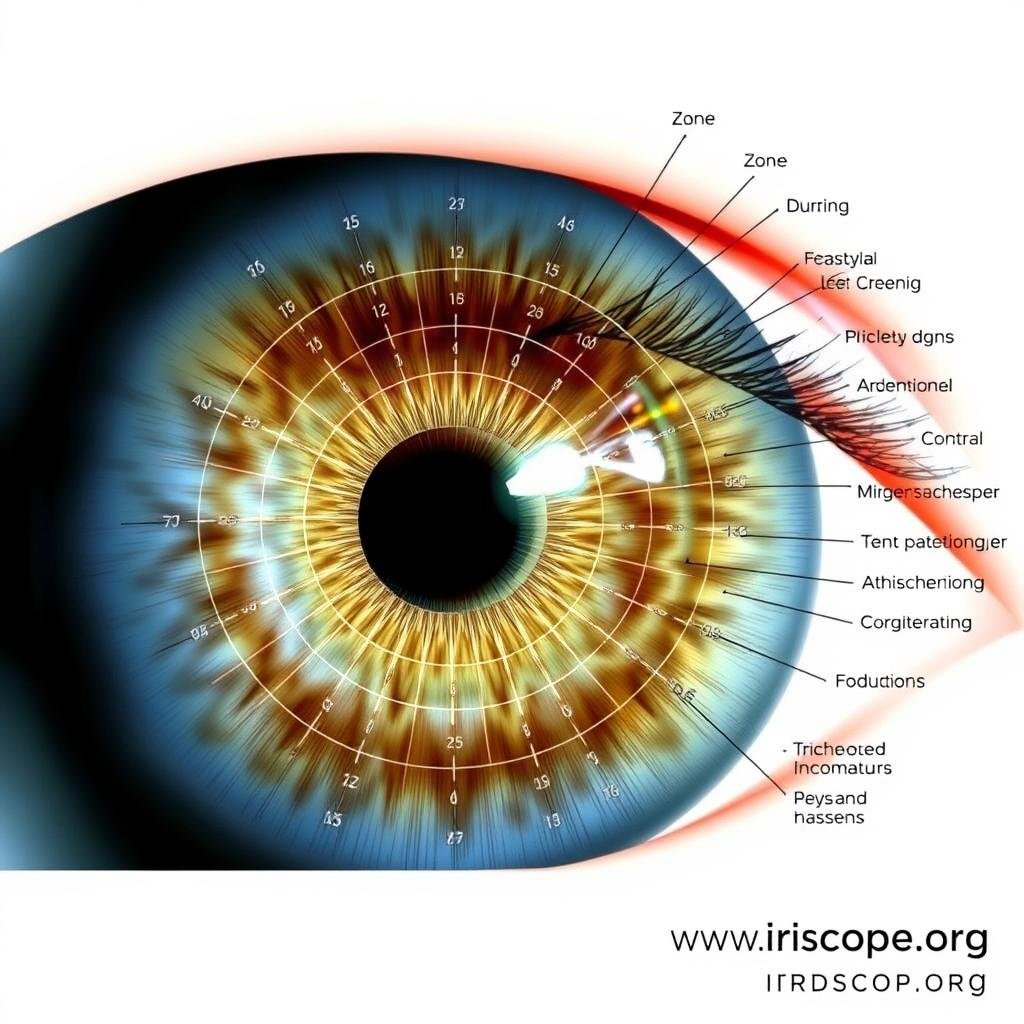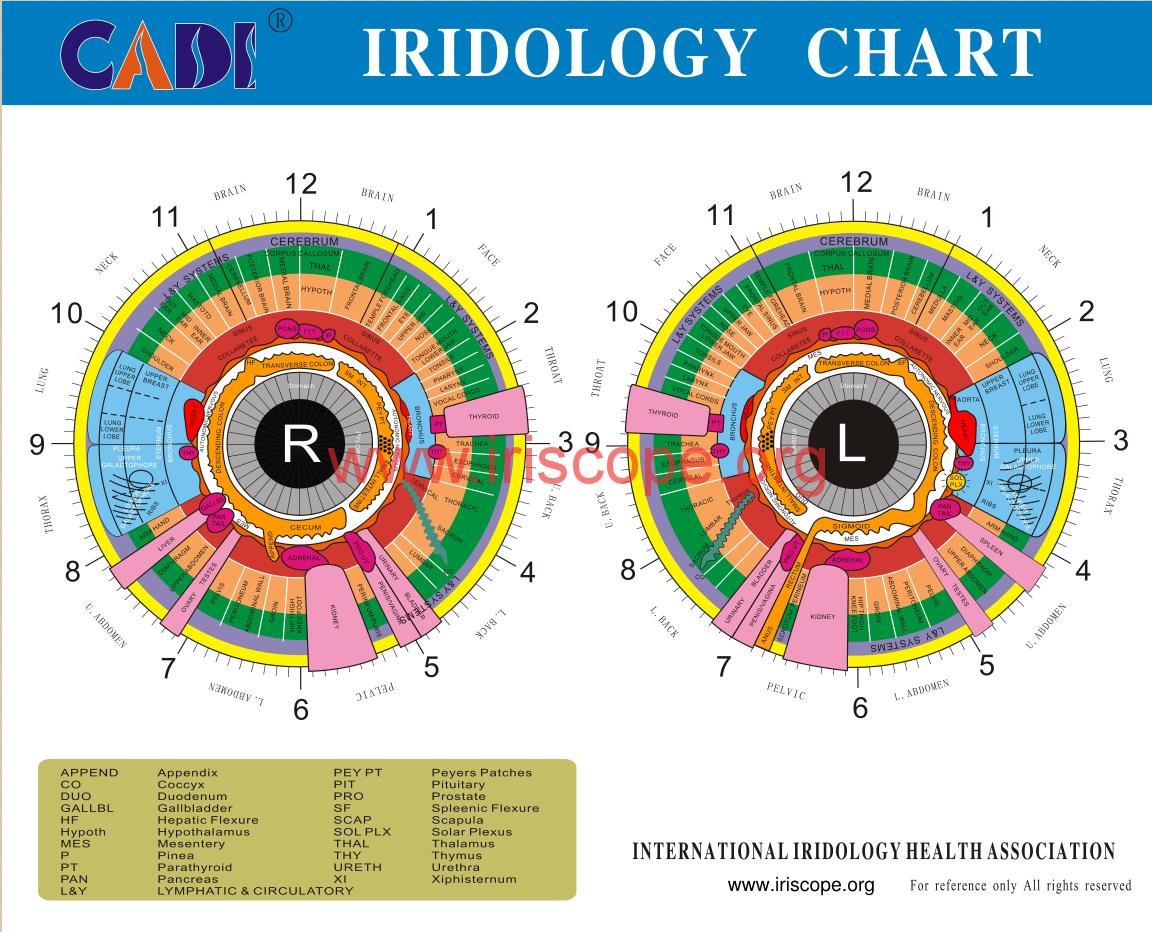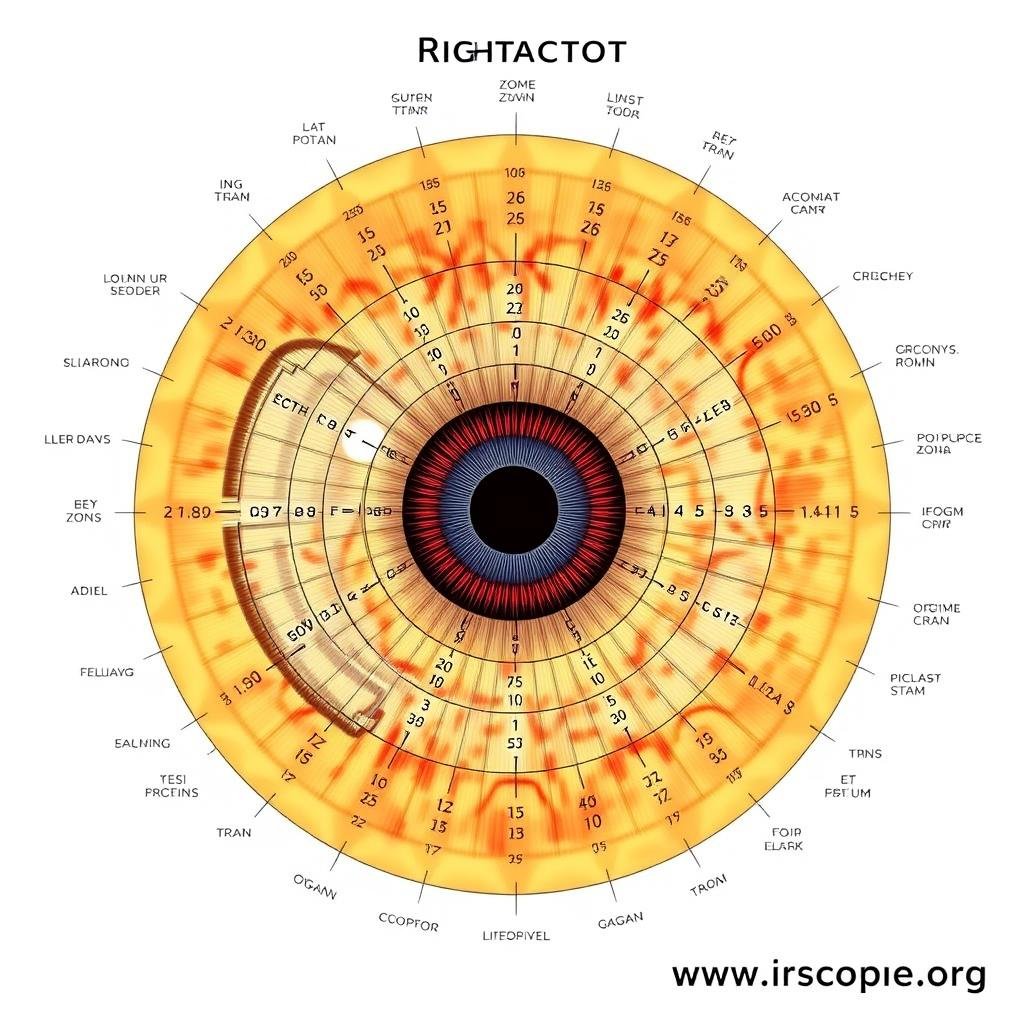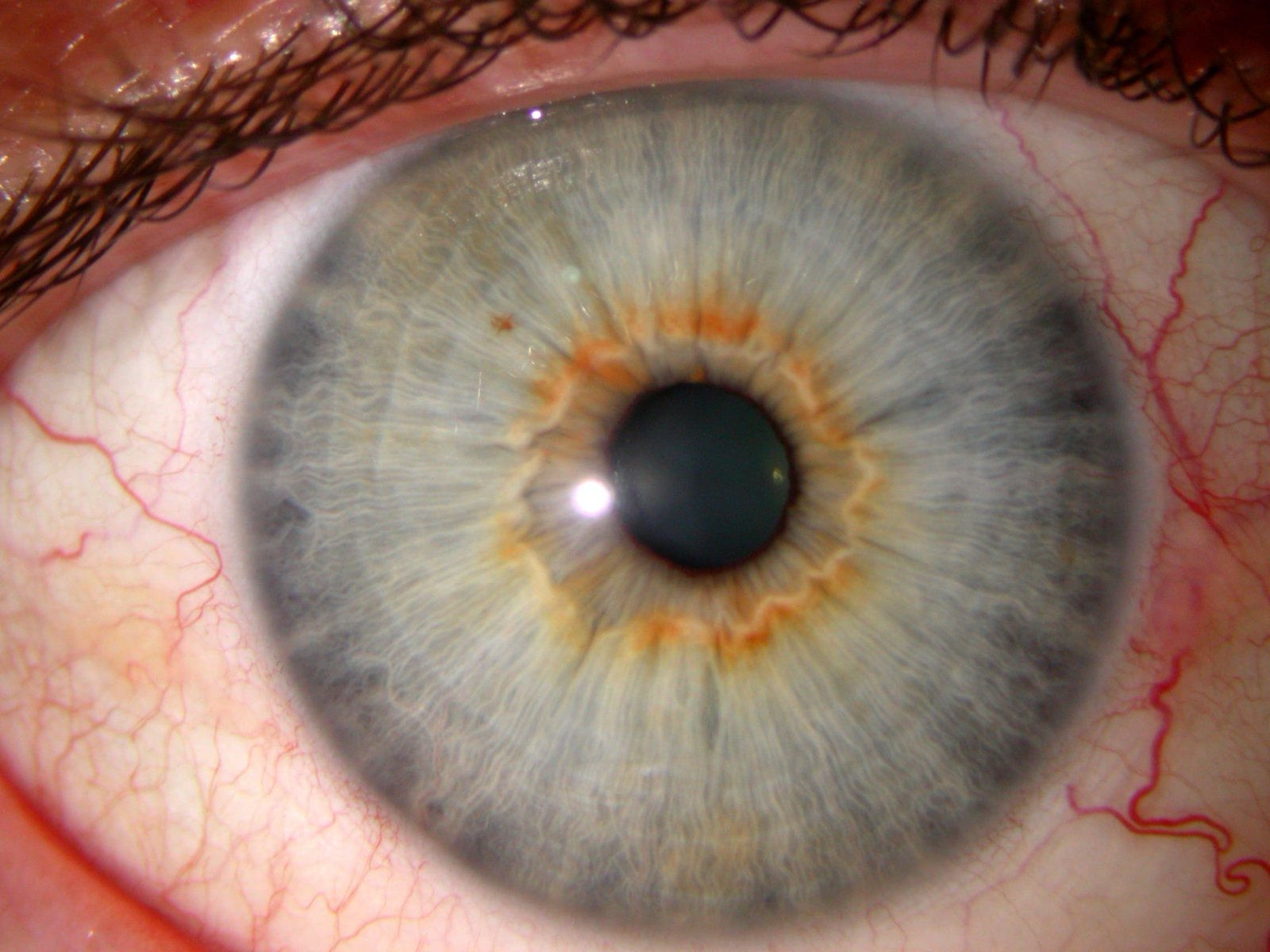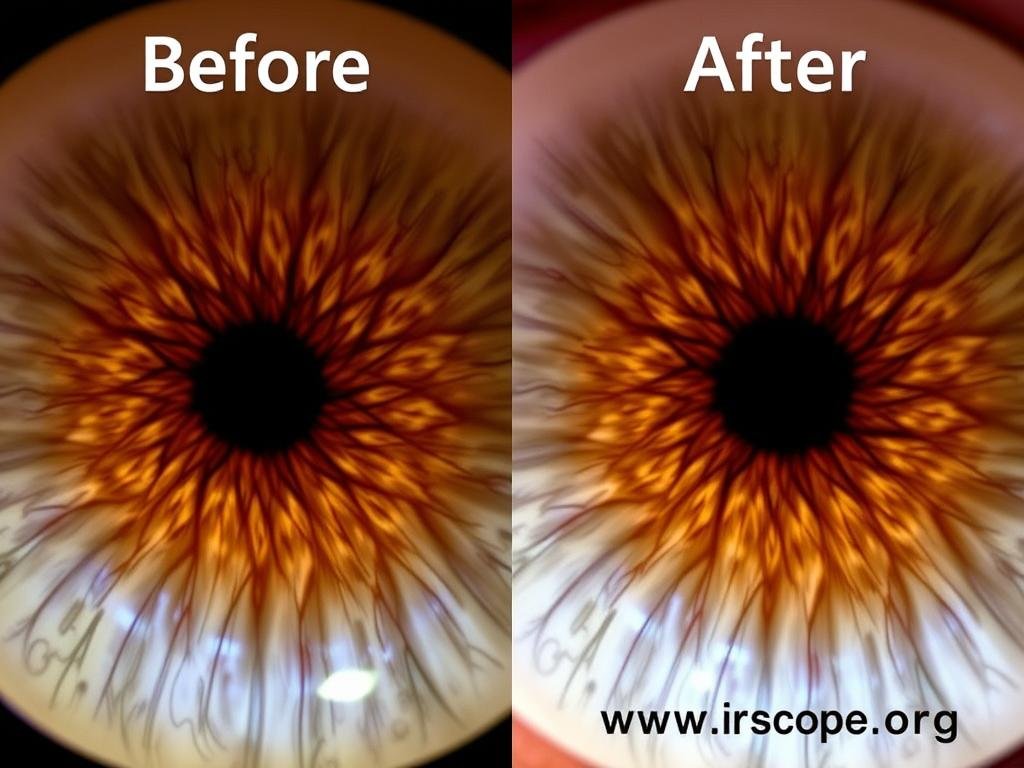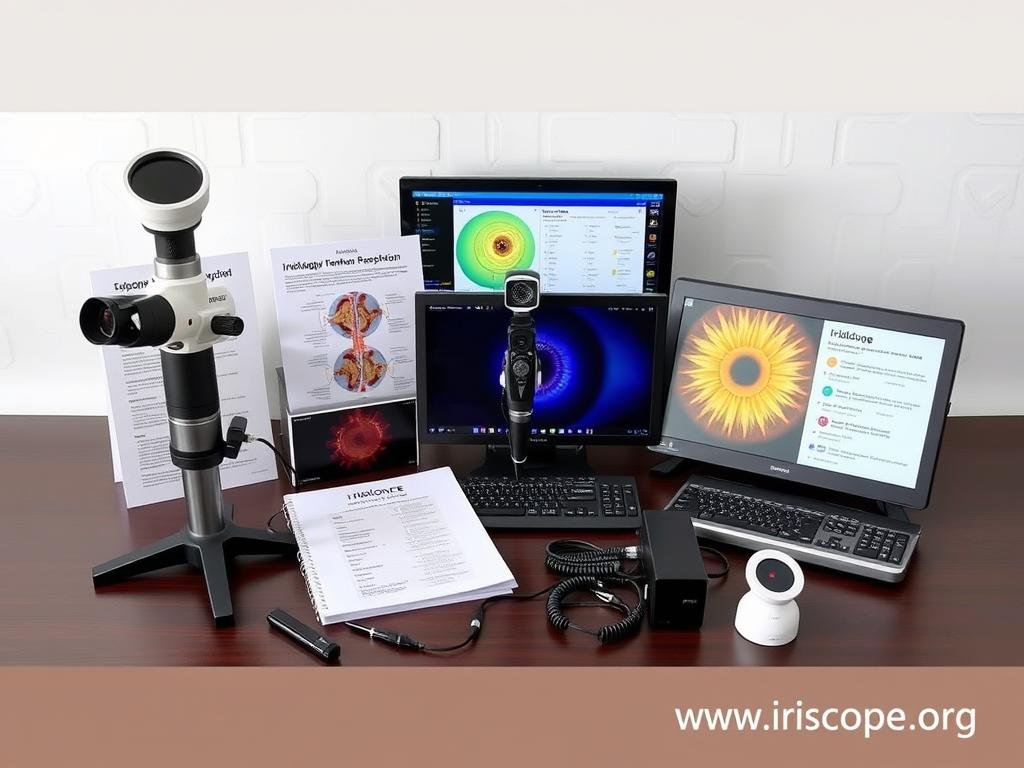The ancient practice of iridology offers a fascinating window into understanding potential health conditions through careful examination of the iris. As specialists with over 20 years of experience in developing professional iridology equipment, we’ve compiled this comprehensive guide to iridology diagnosis examples to help practitioners and enthusiasts better understand this alternative health assessment method. Whether you’re a seasoned iridologist or simply curious about what your eyes might reveal, this guide will walk you through real-world examples with visual references and detailed interpretations.
Understanding Iridology: The Foundation of Iris Diagnosis
Iridology is the study of the iris, the colored part of the eye, to identify potential health concerns and constitutional strengths and weaknesses. Practitioners believe that specific zones of the iris correspond to different organs and systems within the body, with changes in color, structure, and markings potentially indicating various health conditions.



Comprehensive iridology chart showing how different iris zones correspond to body systems
While conventional medicine does not recognize iridology as a diagnostic tool, many alternative health practitioners use it as part of a holistic health assessment. The practice is based on the concept that the iris contains detailed fibers that reflect the state of health in corresponding body tissues. Let’s explore how iridologists interpret these patterns with specific iridology diagnosis examples.
The Essential Iridology Chart: Mapping Health Through the Iris
At the core of iridology practice is the iridology chart – a detailed map that divides the iris into zones corresponding to different organs and body systems. Understanding this chart is crucial before examining specific iridology diagnosis examples.
Key Zones of the Iridology Chart
- Digestive System Zone: Located around the pupil in both eyes
- Zona del sistema circolatorio: Found in the middle region of the iris
- Zona di sistema linfatico: Visible in the outer regions of the iris
- Zona del sistema nervoso: Typically mapped to the top sections of the iris
- Reproductive System Zone: Usually found in the lower sections of the iris
- Zona di sistema respiratorio: Mapped to specific sections in the middle-upper regions
The left iris generally corresponds to the left side of the body, while the right iris corresponds to the right side. This bilateral representation helps practitioners identify which side of the body might be experiencing issues.
Common Iris Signs in Iridology Diagnosis Examples
Before diving into specific diagnosis examples, it’s important to understand the common signs iridologists look for when examining the iris. These markings form the basis of iridology diagnosis examples and interpretations.
Solchi radiali
These spoke-like lines extending from the pupil outward may indicate digestive weaknesses or issues.
Lacune
These enclosed lesions or “crypts” may indicate inherent weaknesses or lesions in corresponding organs.
Sodium Ring
A white or cloudy ring around the outer edge of the iris may suggest mineral imbalances or arthritic conditions.
Rosario linfatico
A series of white dots forming a circle may indicate lymphatic system congestion.
Anelli nervosi
Circular rings around the iris may suggest nervous tension or stress.
Pigmentation Spots
Dark spots or discolorations may indicate toxin accumulation or specific organ issues.
Detailed Iridology Diagnosis Examples with Interpretations
Now let’s examine specific iridology diagnosis examples and their interpretations according to iridology principles. These examples demonstrate how practitioners analyze iris signs to identify potential health concerns.
Example 1: Digestive System Indicators
Interpretazione:
In this iridology diagnosis example, we can observe pronounced radial furrows extending from the pupil outward through the digestive zone (the area immediately surrounding the pupil). These spoke-like patterns may indicate inherent weakness in the digestive system, potentially relating to issues with nutrient absorption or digestive enzyme production.
The slightly yellowish discoloration in this zone might suggest liver or gallbladder stress, while the darker pigmentation could indicate toxin accumulation. An iridologist might recommend digestive enzymes, liver support herbs, and dietary modifications based on this analysis.
Example 2: Circulatory System Indicators
Interpretazione:
This iridology diagnosis example shows potential circulatory system concerns. Note the distinct markings in the heart zone (typically located at the 3 o’clock position in the left iris). The presence of a lacuna (enclosed darker area) in this region might suggest inherent weakness or stress in the cardiovascular system.
The slightly reddish discoloration could indicate inflammation, while the presence of fine, vessel-like markings might suggest capillary fragility. Based on these observations, an iridologist might recommend cardiovascular support supplements, anti-inflammatory herbs, and circulation-enhancing practices.
Example 3: Lymphatic System Congestion
Interpretazione:
In this iridology diagnosis example, we can observe what iridologists call a “lymphatic rosary” – a series of white dots forming a circle in the outer regions of the iris. This pattern is often associated with lymphatic system congestion and potential immune system challenges.
The slightly cloudy appearance in the lymphatic zones might suggest poor lymphatic drainage, while the whitish discoloration could indicate chronic inflammation or mucus accumulation. An iridologist might recommend lymphatic-supporting herbs, hydration protocols, and detoxification practices based on these observations.
Professional Iridology Equipment for Accurate Diagnosis
For precise iridology diagnosis examples and analysis, professional equipment makes all the difference. MAIKONG offers state-of-the-art iriscopes, iridology cameras, and software developed with 20+ years of industry expertise.
Explore Our Professional Equipment
Example 4: Nervous System Stress
Interpretazione:
This iridology diagnosis example demonstrates what iridologists identify as nervous system stress. Note the prominent nerve rings (concentric circles) visible throughout the iris. These rings may indicate chronic stress, nervous tension, or anxiety affecting the entire system.
The slightly darker coloration in the brain/nervous system zones (typically located at the top of the iris) might suggest mental fatigue or neurological stress. An iridologist might recommend nervous system supporting herbs, stress management techniques, and adequate rest based on these observations.
Example 5: Respiratory System Indicators
Interpretazione:
In this iridology diagnosis example, we can observe potential respiratory system concerns. Note the distinct markings in the lung zones (typically located in the middle-upper regions of the iris at approximately the 2 and 10 o’clock positions).
The presence of lacunae (enclosed darker areas) in these regions might suggest inherent weakness or stress in the respiratory system. The whitish discoloration could indicate chronic inflammation or mucus accumulation. Based on these observations, an iridologist might recommend respiratory-supporting herbs, breathing exercises, and environmental modifications.
Professional Equipment for Accurate Iridology Diagnosis Examples
Obtaining clear, detailed iridology diagnosis examples requires professional equipment. As specialists with over 20 years of experience in developing iridology tools, MAIKONG offers a comprehensive range of products designed for practitioners at all levels.
Professional Iriscope
Our advanced iriscopes provide exceptional magnification and clarity for detailed iris examination, allowing practitioners to identify subtle markings and discolorations with precision.
Telecamera per iridologia
Our specialized iridology cameras capture high-resolution images of the iris, enabling detailed analysis and documentation of iridology diagnosis examples for client records and comparison over time.
Software di iridologia
Our comprehensive iridology software integrates with our cameras and iriscopes, providing analytical tools, comparison features, and detailed iridology charts for thorough assessment.
Complete Iridology Diagnostic Solutions
MAIKONG offers comprehensive iridology equipment packages for practitioners at all levels. Our products are designed with precision and backed by over two decades of research and development.
Request a Consultation
Interpretation Guidelines for Iridology Diagnosis Examples
When analyzing iridology diagnosis examples, practitioners follow specific guidelines to ensure accurate and consistent interpretations. Here are key principles to consider:
Valutazione costituzionale
- Iris Color Analysis: The base color of the iris (blue, brown, mixed) provides insights into genetic predispositions and constitutional strengths/weaknesses.
- Fiber Density Evaluation: The density and arrangement of iris fibers indicate overall constitutional integrity.
- Structural Integrity: The overall structure and symmetry of the iris reflect constitutional balance.
Acute vs. Chronic Indicators
- Acute Signs: Bright white markings often indicate active, acute conditions.
- Chronic Signs: Darker, more established markings typically suggest chronic or long-standing issues.
- Segni di guarigione: White lines surrounding darker areas may indicate healing processes.
Integrated Analysis
- Bilateral Comparison: Compare left and right irises to assess bilateral organ function.
- Zone Relationships: Consider how adjacent zones may influence each other.
- Systemic Patterns: Look for patterns that may affect multiple systems simultaneously.
Contextual Interpretation
- Client History Integration: Always interpret iris signs in the context of the client’s health history.
- Symptom Correlation: Verify iris findings with reported symptoms and known conditions.
- Holistic Perspective: Consider the whole person, not just isolated iris signs.
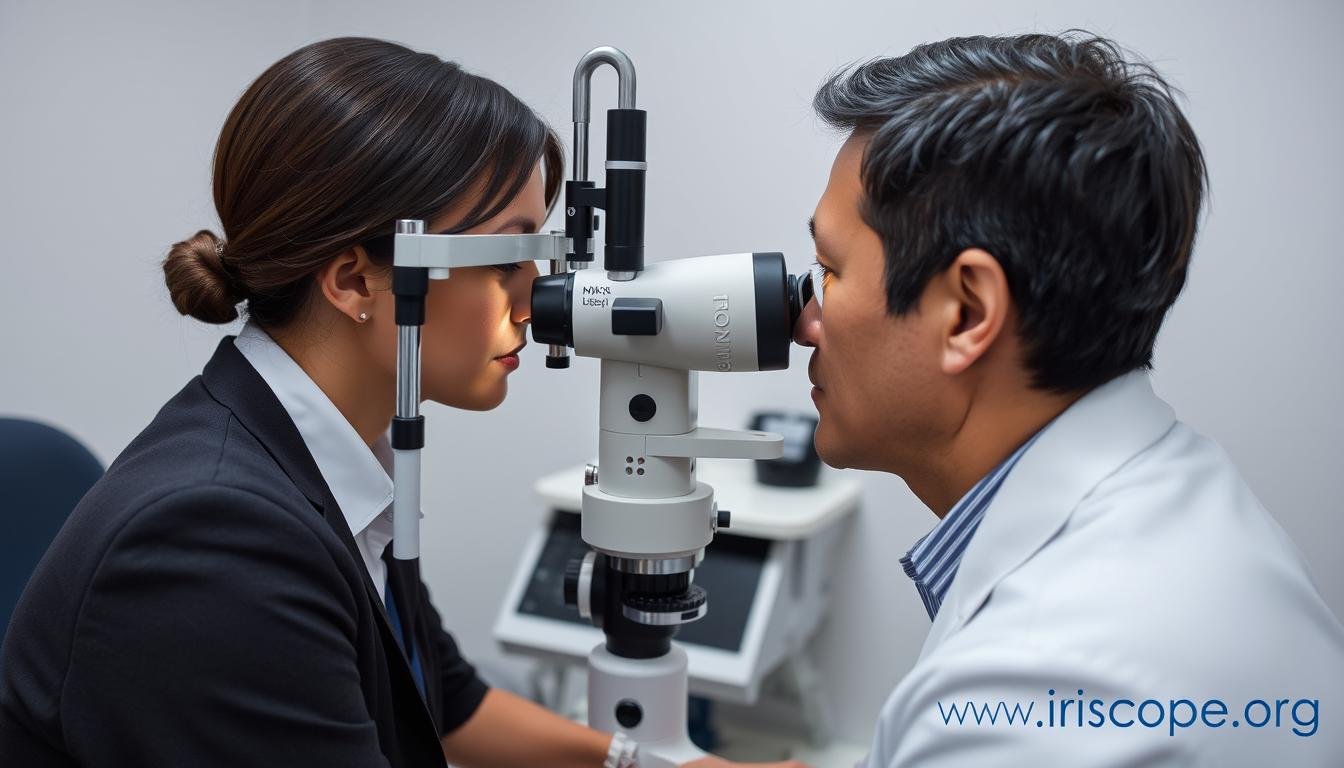
Professional iridology assessment using MAIKONG equipment for accurate diagnosis
Case Studies: Real-World Iridology Diagnosis Examples
The following case studies demonstrate how iridology practitioners apply diagnostic principles in real-world scenarios. These iridology diagnosis examples illustrate the practical application of iris analysis.
Caso di studio 1: valutazione della salute digestiva
Initial Observation:
A 42-year-old client presented with chronic digestive complaints. Iris analysis revealed pronounced radial furrows in the digestive zone, yellowish discoloration in the liver/gallbladder region, and a lymphatic rosary pattern indicating potential toxin accumulation.
Raccomandazioni:
Based on these iridology diagnosis examples, the practitioner suggested dietary modifications (eliminating processed foods, increasing fiber), digestive enzyme supplements, and liver-supporting herbs.
Follow-up Results:
After six months, follow-up iris analysis showed reduced yellowish discoloration and less pronounced radial furrows, correlating with the client’s reported improvement in digestive symptoms.
Case Study 2: Stress and Nervous System Assessment
Initial Observation:
A 35-year-old client with chronic fatigue and anxiety showed prominent nerve rings throughout both irises, darkened areas in the adrenal zones, and a generally contracted pupil indicating sympathetic nervous system dominance.
Raccomandazioni:
Based on these iridology diagnosis examples, the practitioner recommended stress management techniques, adaptogenic herbs, B-complex vitamins, and regular relaxation practices.
Follow-up Results:
After four months, follow-up iris analysis showed reduced prominence of nerve rings and improved coloration in the adrenal zones, correlating with the client’s reported reduction in anxiety and improved energy levels.
Document Your Own Iridology Case Studies
MAIKONG’s professional iridology equipment allows practitioners to document and track changes in the iris over time, creating valuable case studies and client records.
Contact us for personalized equipment recommendations based on your practice needs.
Prospettiva scientifica su Iridology Diagnosis Examples
It’s important to acknowledge that the scientific community has varying perspectives on iridology. While many practitioners report success with iridology diagnosis examples in clinical settings, conventional medicine has not widely accepted iridology as a diagnostic method.
Supporting Perspectives
- Many practitioners report consistent patterns in iris-to-organ correlations
- Non-invasive assessment method with no side effects
- May provide early indications of potential health imbalances
- Can complement other holistic assessment methods
- Growing body of practitioner case studies and observations
Limiting Perspectives
- Limited peer-reviewed research validating diagnostic accuracy
- I modelli di iride sono in gran parte determinati geneticamente e stabili
- Conventional medicine does not recognize as diagnostic
- Interpretation can vary between practitioners
- Should not replace conventional medical diagnosis
At MAIKONG, we recognize the importance of an integrated approach to health assessment. While we provide professional equipment for iridology practitioners, we encourage using iridology as part of a comprehensive health evaluation rather than as a standalone diagnostic method.
Applicazioni pratiche di Iridology Diagnosis Examples
Comprensione iridology diagnosis examples can have several practical applications for both practitioners and individuals interested in holistic health approaches:
Early Detection
Iridology may help identify potential areas of weakness before they manifest as clinical symptoms, allowing for preventative measures.
Valutazione costituzionale
Understanding one’s constitutional strengths and weaknesses through iris analysis can inform personalized health strategies.
Valutazione complementare
Iridology can complement other assessment methods in holistic health practices, providing additional perspectives.
Educazione al cliente
Iris analysis can serve as an educational tool to help clients visualize and understand potential health patterns.
Monitoraggio dei progressi
Documenting iris changes over time can help track progress in response to health interventions.
Research Opportunities
Collecting and analyzing iridology diagnosis examples contributes to the growing body of knowledge in this field.
Conclusion: The Value of Understanding Iridology Diagnosis Examples
Exploring iridology diagnosis examples offers a fascinating window into the potential connections between iris patterns and overall health. While iridology continues to evolve as a complementary assessment method, its non-invasive nature and holistic perspective make it a valuable tool for many health practitioners.
At MAIKONG, we remain committed to advancing the field of iridology through the development of precision equipment that enables clear, detailed iris analysis. Whether you’re an experienced iridologist or just beginning to explore this fascinating field, our professional tools can help you achieve more accurate and consistent results.
For more information about our products or to discuss how MAIKONG equipment can enhance your practice, contact our team today. With over two decades of experience in the industry, we’re here to support your journey in understanding and applying iridology diagnosis examples in your health practice.
Elevate Your Iridology Practice with MAIKONG
Discover our complete range of professional iridology equipment designed for practitioners who demand precision and reliability.
Visit Our Website

















